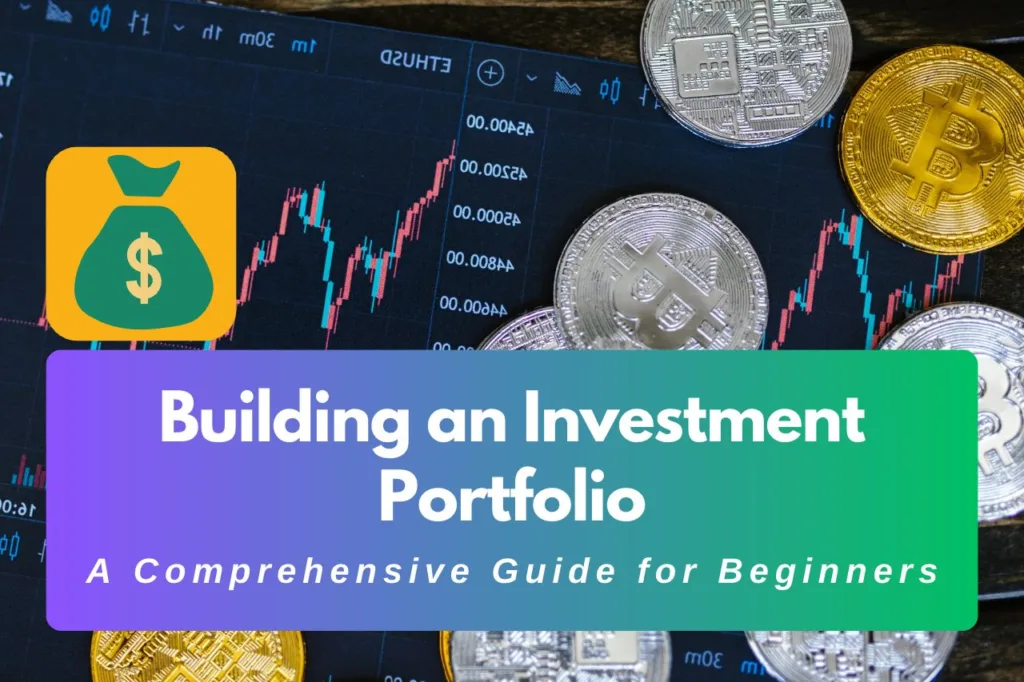A Comprehensive Guide for Beginners 🚀

Introduction
Investing may seem daunting at first, but it’s an excellent way to build long-term wealth. As a beginner, it’s important to know where to start. Building a personal investment portfolio is a crucial step toward achieving your financial goals. 🎯 It requires careful planning and consideration of several factors, including your goals and risk tolerance. Let’s dive into the exciting world of investment portfolios! 💼
Why Build an Investment Portfolio? 🌟
Before we explore the details, let’s understand why building an investment portfolio is crucial. An investment portfolio serves as a treasure chest 🎁 of carefully selected assets, such as crypto, stocks, bonds, and mutual funds. By diversifying your investments across various asset classes, you can maximize potential returns and minimize risk. It’s like having a well-rounded team to tackle the investment game!
Key Factors to Consider ✨
1. Define Your Financial Goals 🏆
The first step in building an investment portfolio is to define your financial goals. Are you saving for retirement, a dream vacation, or buying a house? Each goal may have different timelines and risk tolerances. Clearly understanding your goals will help you tailor your portfolio to meet your specific objectives. So dream big and set your financial goals in motion! 💪
2. Assess Your Risk Tolerance 🎢
Understanding your risk tolerance is crucial for designing the perfect investment portfolio. Risk tolerance refers to your ability and willingness to handle fluctuations in your investments’ value. Are you ready for a roller coaster ride 🎢 with potentially high returns, or do you prefer a smoother journey? By knowing your risk tolerance, you can choose investments that match your comfort level.
3. Diversification Is Key 🌈
Diversification is like having a colorful palette 🎨 of investments. It involves spreading your investments across different asset classes, industries, and regions. This strategy helps reduce the impact of any single investment’s performance on your overall portfolio. Remember, don’t put all your eggs in one basket! Diversify your investments and enjoy the benefits of reduced risk.
4. Understand Investment Options 💡
To build a winning portfolio, you must understand the various investment options available. Cryptos, Stocks, bonds, mutual funds, ETFs – the investment world has many choices. Each option comes with its own set of features, benefits, and risks. Dive into research 📚 or seek advice from a financial advisor to gain a comprehensive understanding of these options. Become an investment maestro! 🎶
5. Regular Monitoring and Adjustments 📊
Building an investment portfolio is an ongoing process. It’s like tending to a beautiful garden 🌻 that needs regular care. Monitor your investments and make necessary adjustments to maintain your desired asset allocation. Economic conditions, market trends, and personal circumstances may change over time, requiring you to fine-tune your portfolio. Stay vigilant and nurture your investments!
Frequently Asked Questions (FAQs) 🙋♀️🙋♂️
Q1: How much money do I need to start building an investment portfolio?
A: The amount of money needed to start an investment portfolio can vary. Some investments have minimum requirements, while others can be started with smaller amounts. Start with what you’re comfortable investing in and gradually increase over time. Every little bit counts!
Q2: Should I seek professional guidance to build my investment portfolio?
A: Seeking guidance from a financial advisor can be beneficial, especially for beginners. They can provide personalized advice based on your goals and risk tolerance, helping you navigate the complex investment landscape. Think of them as your investment Sherpa, guiding you along the path to financial success! 🗺️
Q3: How often should I review my investment portfolio?
A: It’s recommended to review your investment portfolio at least annually. However, major life events, changes in financial goals, or significant market fluctuations may warrant more frequent reviews and adjustments. Stay proactive and keep your portfolio in tune with your ever-evolving circumstances.
Conclusion 🎉
Building an investment portfolio is an exciting journey that can lead to financial prosperity. By considering factors such as your goals, risk tolerance, diversification, investment options, and regular monitoring, you’ll be on the path to success. Remember, investing is a long-term endeavor, so stay committed even during market fluctuations. 📈
Now, equip yourself with knowledge, take calculated risks, and watch your investments grow! Start building your investment portfolio today and unlock a world of financial opportunities. 🌟💼
Note: The information provided in this article is for educational purposes only and should not be considered financial advice. Consult with a qualified professional before making any investment decisions.



